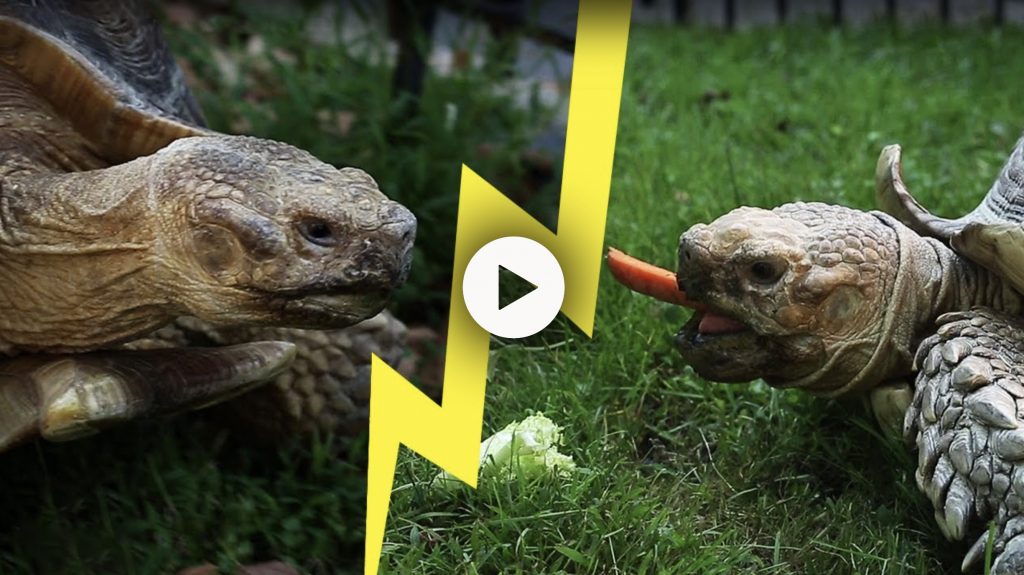If you believe — like I did — that the American Museum of Natural History’s interest in animals begins with fossils and ends with taxidermy, you’ll be surprised — like I am — to learn that behind that pink granite exterior live a pair of very-much-alive African spur-thighed tortoises. Hermes and Mud.
The tortoises are brothers, purchased on a whim by the museum’s Darrel Frost 13 years ago. Since then they’ve lived in high-tech housing inside the museum which, as Frost jokes, at 400 square feet is more spacious than the apartments of many of New York City’s human inhabitants. I can relate: That’s right about the size of my NYC pad, where I have lived for longer than Hermes and Mud have been alive.
Spur-thighed tortoises, also known as sulcata tortoises (Centrochelys sulcata), are found in the Sahel, a semiarid band of savanna stretching across Africa below the Sahara Desert, from Nigeria and Cameroon in the west to Ethiopia and Somalia in the east. Their native range is vegetated by shrubs and grasslands, and areas of mostly dry woodland.
The sulcata’s habitat, like so many tortoises, is fragmented and heavily degraded today by the activities of man. But when they’re left alone to thrive, they can grow up to 250 pounds, making them the third largest tortoise in the world after the tortoises of the Galapagos Islands and Aldabra.
Check out Hermes and Mud at AMNH including a too-cute stroll around the museum garden:


